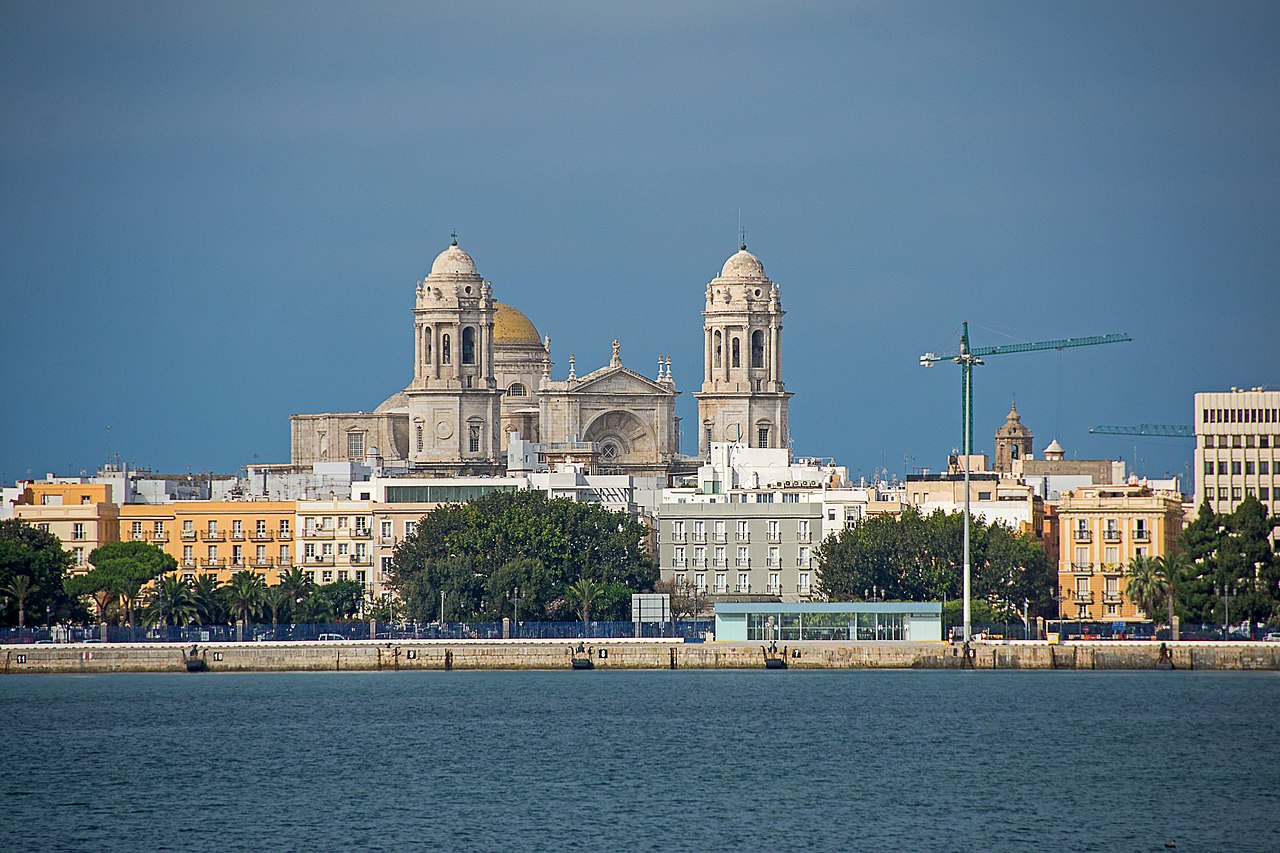
Cadiz
Surely you have ever wondered what to see in the province of Cádiz, especially when organizing a trip to the south of the Iberian Peninsula. We will tell you that it has wonderful places both on its coast and in the interior. In addition, it offers you a magnificent gastronomy and a rich monumental heritage. All this without forgetting the proverbial sympathy with which the people of Cádiz will receive you.
So that you know what to see in the province of Cádiz, we invite you to our tour of it. We will start in the capital to move to the coastal areas and later to some of the most beautiful towns in the interior.
The capital, the first thing to see in the province of Cádiz
Located in front of the estuary of the Guadalete river and in a natural park, Cádiz is one of the cities Older from Europe, with more than three thousand years of history, as evidenced by the archaeological remains found in the area. In fact, it was founded by the Phoenicians under the name of gádir (strength). And then it lived under the domination of Romans, Visigoths, Muslims and even, for a short time, the Byzantines.
The result of such a long history is its rich monumental heritage that includes both archaeological sites and civil, religious and military constructions. For all these reasons, the capital is the first thing to see in the province of Cádiz.
Cathedral of Santa Cruz de Cádiz
It is a beautiful building that combines the baroque and the neoclassical. Its construction began in the XNUMXth century to finish in the XNUMXth century. With its large proportions, its two towers and its dome, it is visible from all ends of the city. Inside you will find several chapels, some imposing Corinthian columns and a free-standing temple dedicated to the Immaculate Conception.
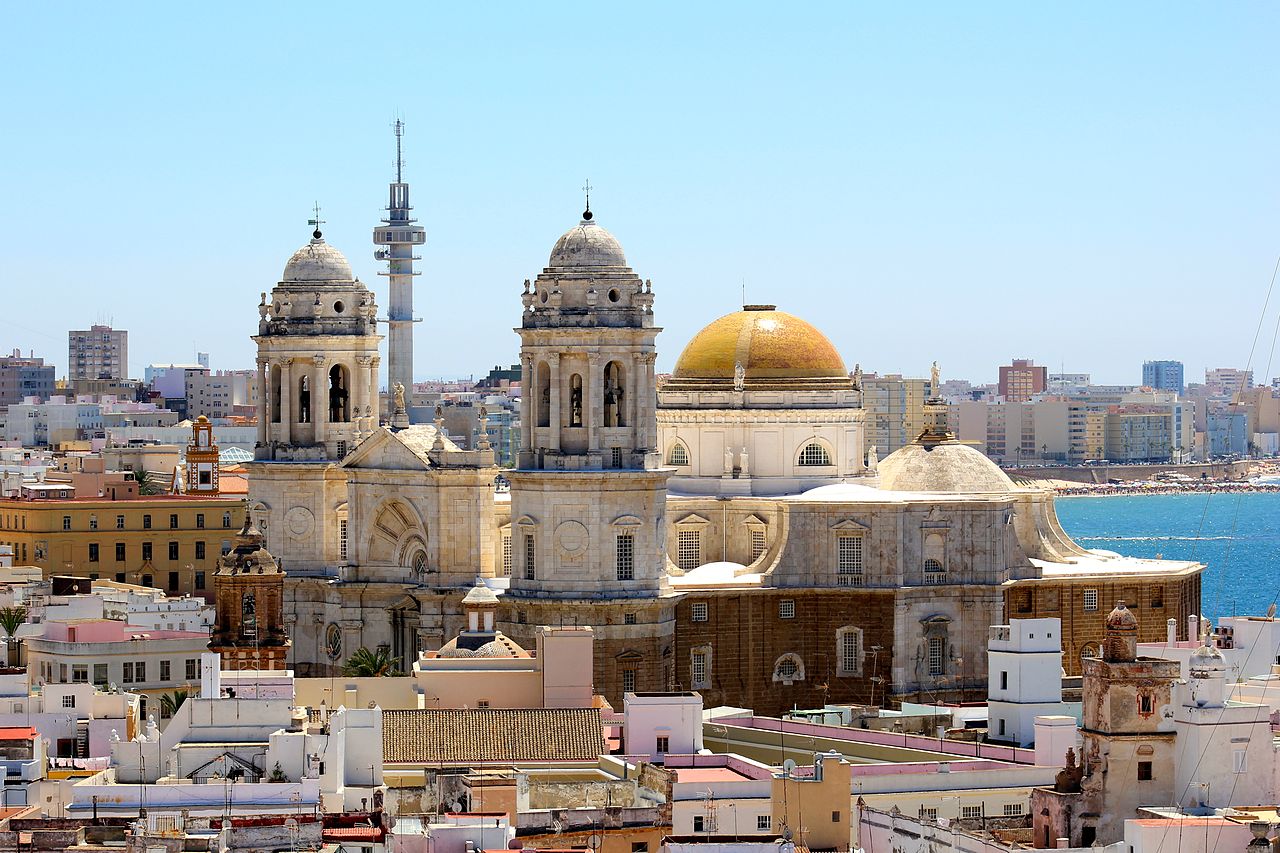
Cathedral of Cadiz
Earth Gate
It is one of the entrances to the city that the old wall XNUMXth century. Carved in marble and in an academic style, a tower was added a hundred years later to serve the Andalusian optical telegraphy line.
Great Falla Theater
It is another of the symbols of the city and will attract your attention for its spectacular red facade in Mudejar style with three horseshoe arches. It was inaugurated in 1910 and every year it hosts the contest of the popular carnival chirigotas.
Teatro novel
It was built in the 1981st century BC and was fortuitously rediscovered in 20 when a department store building caught fire. It had a capacity for 000 spectators, making it the second largest in the Roman world after Pompeii. It is not the only archaeological remains of the city. To the same time belongs the salting factory and even older, since it belongs to the time of the Phoenicians, it is the Gádir site.
Castles of Cádiz
As a coastal city, Cádiz was a fortified city. Of this there are several remains, among which the castles of San Sebastián, San Lorenzo del Puntal and Santa CatalinaAs well as Candelaria bastion. You also have other coastal defenses to see in the province of Cádiz. For example, castles of Sancti Petri, Saint Romualdo y San Marcos from Puerto de Santa María.
other monuments
Cádiz has much more to see. Thus, you can visit the impressive neoclassical building of the Town hall; the precious Admiral's house, of baroque style; the Customs palace, a gigantic construction equally classicist; the old one Royal Tobacco Factory, Mudejar style, or the arches of the White and the Rose, belonging to the old Roman wall the first and the medieval the second.
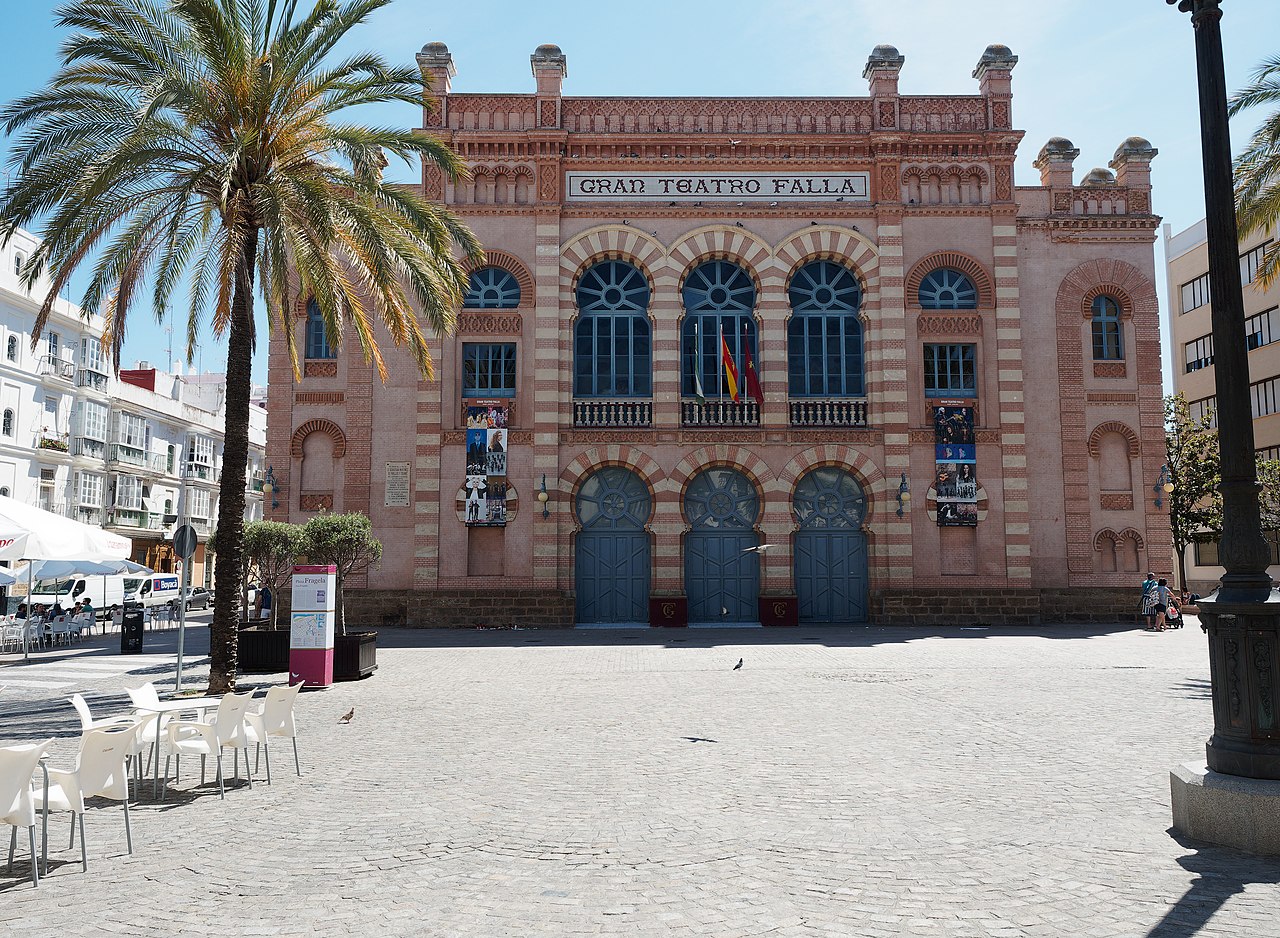
Manuel de Falla Theater
Beaches in the province of Cádiz
Leaving the capital, you have a large number of beaches to see in the province of Cádiz. The coastal strip of this is known for Costa de la Luz and you have sandy areas of all types: urban, rural and little used and even a good number of small coves.
In Rota you have the Costilla beach, which measures just over a kilometer and has the Blue Flag distinctive. In Puerto de Santa María stands out Valdegrana's, with the same qualification and part of which is in the protected area of the Toruños Natural Park. Most popular is the Barrosa Beach, in Sancti Petri, protected by cliffs and dunes and considered one of the best in the entire province.
For its part, in Conil there are also magnificent sandy areas and small and charming coves such as Roche's. In the municipality of Véjer de la Frontera, you will find the El Palmar beach. And you also have beautiful sandy areas in Mecca pipes o Trafalgar.
And, to finish this review of the beaches that you have to see in the province of Cádiz, we will talk to you about the Germans or Silver Cape, in Zahara de los Atunes, and those of Tarifa, perfect if you like to surf. Among these, the Valdevaqueros beach o the one in Bologna.
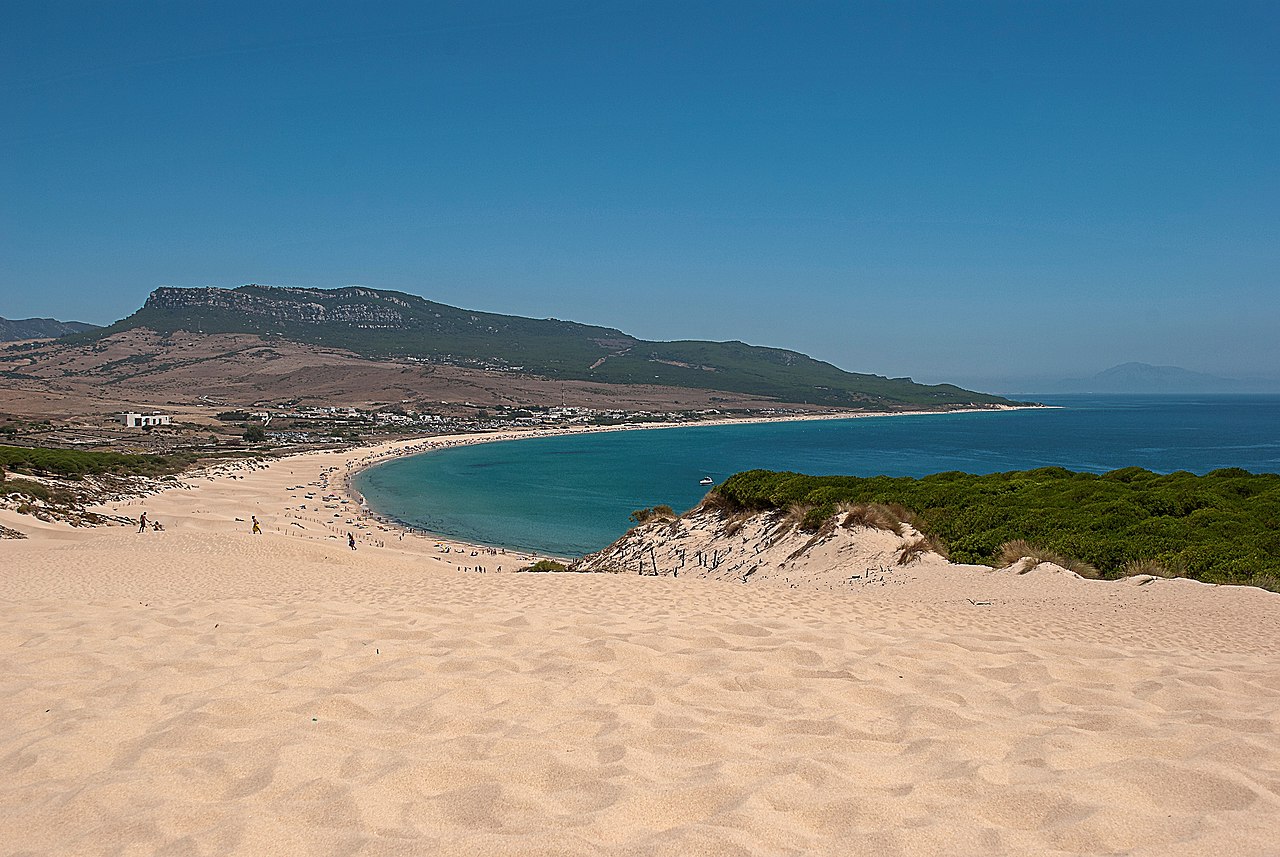
Beach of Bologna
Inland towns: the Route of the White Villages
We would leave this guide on what to see in the province of Cádiz incomplete if we did not tell you about the towns in the interior. As is the case with Granada, for example, in the province of Cadiz you go from the coast to the mountains in a few kilometers. And in the latter there are many beautiful towns, almost all of them integrated into the so-called Route of the White Villages. Let's go over some of them.
Arches of the Fontera
Located on a hill almost two hundred meters high above the Guadalete river, you can see in it the church of Santa María de la Asunción, built in the XNUMXth century in Mudejar style; the Arcos castle, which is an Asset of Cultural Interest; the Calduba tower, a Roman remains from the XNUMXnd century, and the Conde del Águila palace, a beautiful Gothic-Mudejar building. But above all you will enjoy walking through its narrow alleys of white houses, common to all these localities.
Vejer de la Frontera
Its old town is Historic Artistic Set since 1976. The walls stand out, very well preserved; the church of Divino Salvador, which is Gothic-Mudejar, or the Torre del Mayorazgo. And on the outskirts you can see the hermitage of Nuestra Señora de la Oliva, with a beautiful Baroque altarpiece. If you also want to enjoy Nature, you have the beach of El Palmar, as we have said, and the Breña Park and the Barbate Marshes.
medina sidonia
It is located on the Cerro del Castillo. This is the highest in the area, which allows you to get magnificent views of the entire province. For this reason, this town is known as "The Balcony of the Bay". It is not its only natural wealth, since a good part of its municipal term belongs to the Los Alcornocales Natural Park.
On the other hand, Medina Sidonia is also a Historic-Artistic Complex due to its walled enclosure; their two castles; the XNUMXth century Town Hall; the Stables of the Duke or the churches of Santa María la Coronada, de la Victoria and San Juan de Dios.
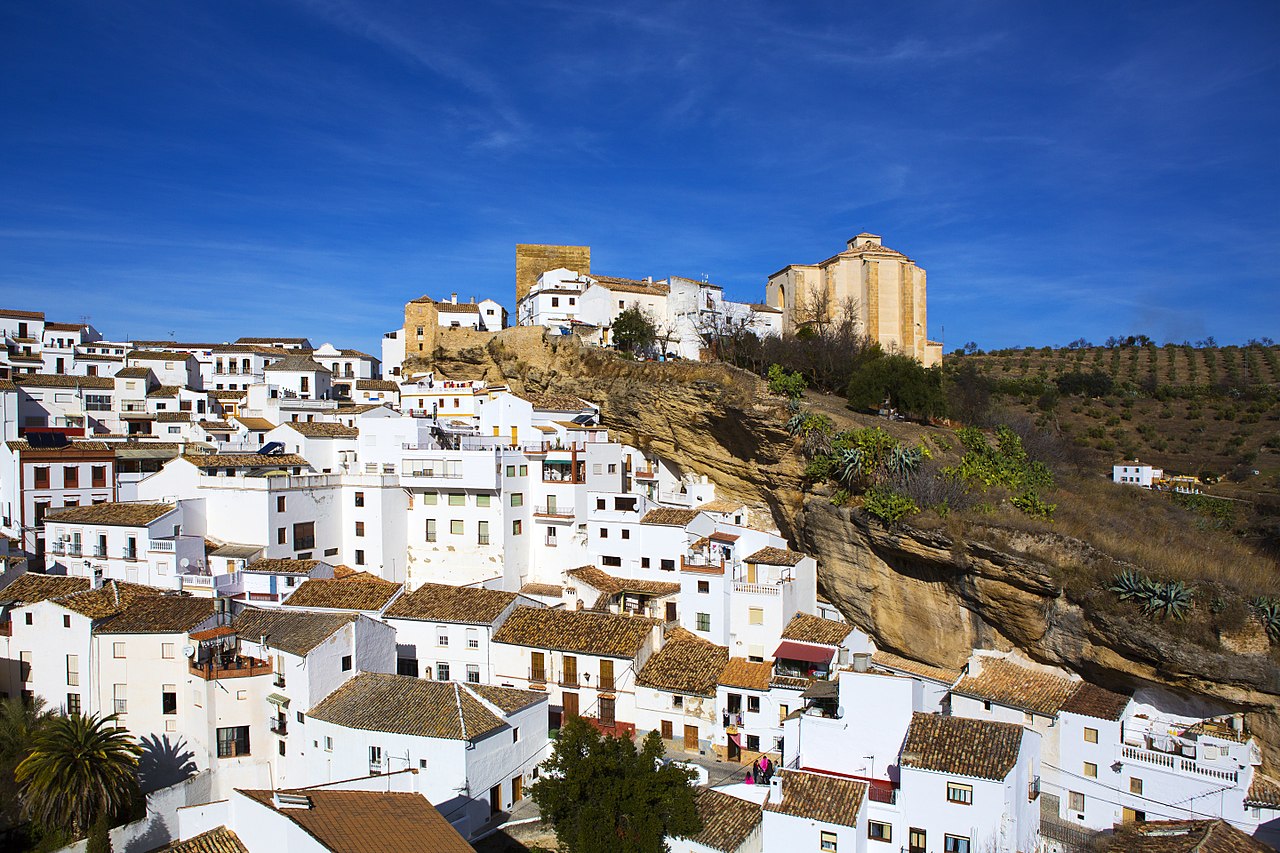
Setenil de las Bodegas
Setenil de las Bodegas
Perhaps this is the most curious town of all that you have to see in the province of Cádiz. Especially since a good part of their houses take advantage of the mountain stone and seem embedded in it.
Its monuments include the church of Nuestra Señora de la Encarnación, with a Mudejar part and a Gothic part; the bridges of the town; the hermitages of Nuestra Señora del Carmen (XNUMXth century) and San Benito (XNUMXth century) and, above all, the castle of Setenil, a Nasrid period fortress built in the XNUMXth century.
Grazalema
Located in the mountain range of the same name, this town stands out for its environment, with the Sierra de las Nieves Natural Park, the hill of San Cristóbal or the mountains of Endrinal and del Pinar. But also for monuments such as the hermitage of Our Lady of the Angels, the church of san juan or the City Council. As an anecdote, we will tell you that, if you are going to visit Grazalema, bring an umbrella, as it has the highest rainfall rate in all of southern Spain.
Alcala de los Gazules
Integrated in the Los Alcornocales Natural Park, this town is also a Historic Artistic Site. Dominated by her Almohad period castleYou should also see the church of San Jorge, with its beautiful rococo altarpiece of San Cristóbal; the shrine hermitage of Our Lady of the Saints; the church of San Francisco or the convents of Santo Domingo and Santa Clara.
Olvera
It is the door to the Route of the White Villages and holds the title of city since 1877. It is located on the side of a hill almost seven hundred meters high and is watched over from above by the impressive arabic castle and the precious Church of Our Lady of the Incarnation, neoclassical building from the XNUMXth century. You can also see the Victoria and Socorro churches, the Remedios sanctuary and the Caños Santos convent.
In addition, if you like hiking, there are numerous routes from Olvera through the Sierra de Cádiz. For example, the Green Way, which runs almost thirty-seven kilometers between Olvera itself and Puerto Serrano or the route of the Almoravids and Almohads.
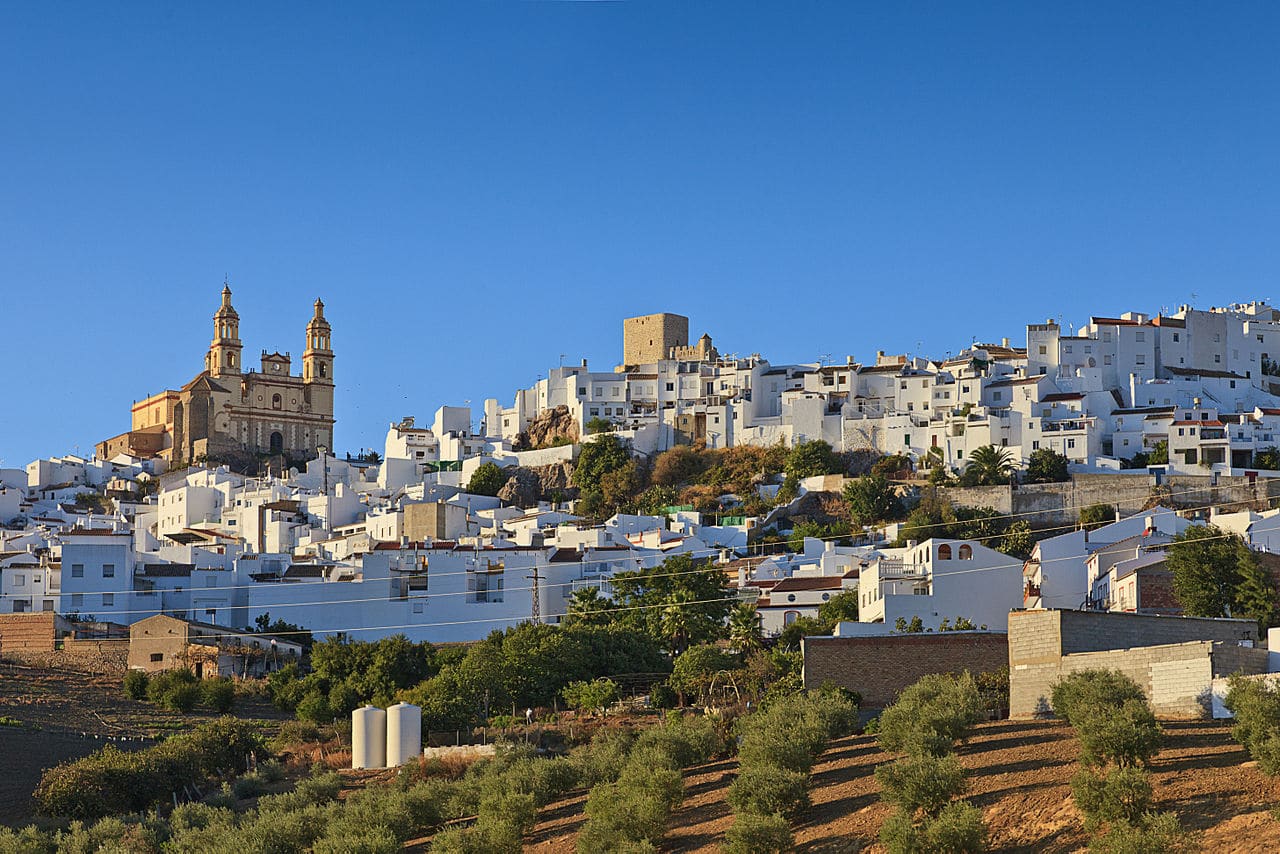
Olvera
The climate in the province of Cádiz
The entire province of Cádiz, with its peculiarities, enjoys a magnificent climate. It is typically Mediterranean type,, although influenced by the proximity of the Atlantic Ocean. Basically, there are two eras in it.
The first is the temperate, which lasts from November to April and presents mild temperatures, with average figures around ten degrees, and a little more rain.
For its part, the warm It lasts from April to November and, especially in summer, it is very hot, with maximums that can exceed forty degrees. In addition, it is very dry in terms of rainfall.
However, you should know that all of the above is valid for the plains and coastal areas. The Sierra de Grazalema is different. The temperatures are cooler and, above all, it rains a lot, with rainfall that exceeds 2000 mm. year. Finally, the wind it is common throughout the province, especially in its western and southern part.
Gastronomy of the province of Cádiz
Cádiz cuisine is one of the richest and most varied in all of Andalusia. The peculiar location of the province means that its gastronomy includes products from the garden, the mountains and the sea.
With all these ingredients many typical dishes are made. Among them are potatoes (potatoes) seasoned or with cuttlefish (squid); the Jerez stew, which has ribs and beef, bacon, chicken and noodles or rice; the shrimp omelette or the tomato soup, which is served hot or cold depending on the time of year.
Very popular are the "fried fish and marinated dogfish, as well as the famous red tuna from almadraba. And more typical the hedgehogs, pure taste of the sea; the nettles, which are seafood, and the Mojama of Barbate.
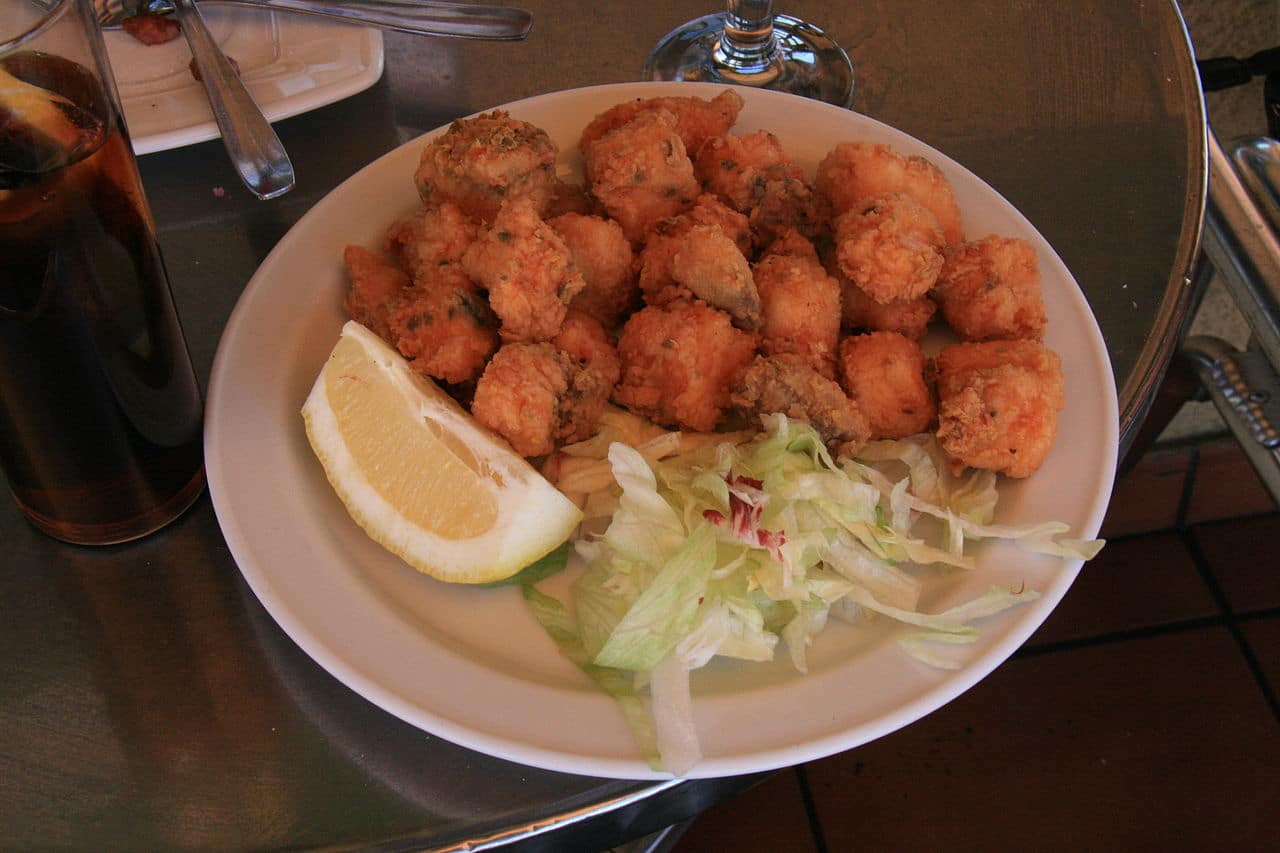
Dogfish in marinade
Other typical dishes are galley soup or fish; the Rabbit In Salsa, typical of the sierra; the tagarnine stew, some small thistles; the cabrillas or snails in tomato; the urta (a fish) a la roteña and the mackerel with piriñaca or vegetable hash.
As for desserts, the Cadiz bread, a delicious marzipan. The caramel cookies are typical of Medina Sidonia and the melody (a kind of jam) or the sky bacon from Jerez de la Frontera. They are also common pestinos, candied fruits and hump of Ubrique.
Finally, to accompany such exquisite dishes, you have the magnificent sherry wines, the manzanilla from Sanlúcar de Barrameda, the white wines from Chiclana or the reds of the geographical indication Land of Cádiz.
How to get around the province of Cádiz
The entire province of Cádiz is well served by road. To get there you have the AP-4, which comes from Seville, and the AP-7, which runs along the entire Mediterranean coast.
Once in the area, you can take advantage of roads such as the N-340 that connects San Fernando and Algeciras, and the A-381, which goes from Jerez to Los Barrios. For its part, to travel through the towns of the mountains, you have the A-382, which connects Jerez with Arcos de la Frontera.
These localities are well connected with bus lines. But, if you want something more typical, you can take the train from Algeciras to La Bobadilla, with a stop in Setenil de las Bodegas and that offers you very beautiful landscapes.
In conclusion, you already know what to see in the province of Cádiz. As you can see, the offer is very rich and varied, including beach, mountains, monumental heritage and delicious cuisine. Now you just need to organize your trip.